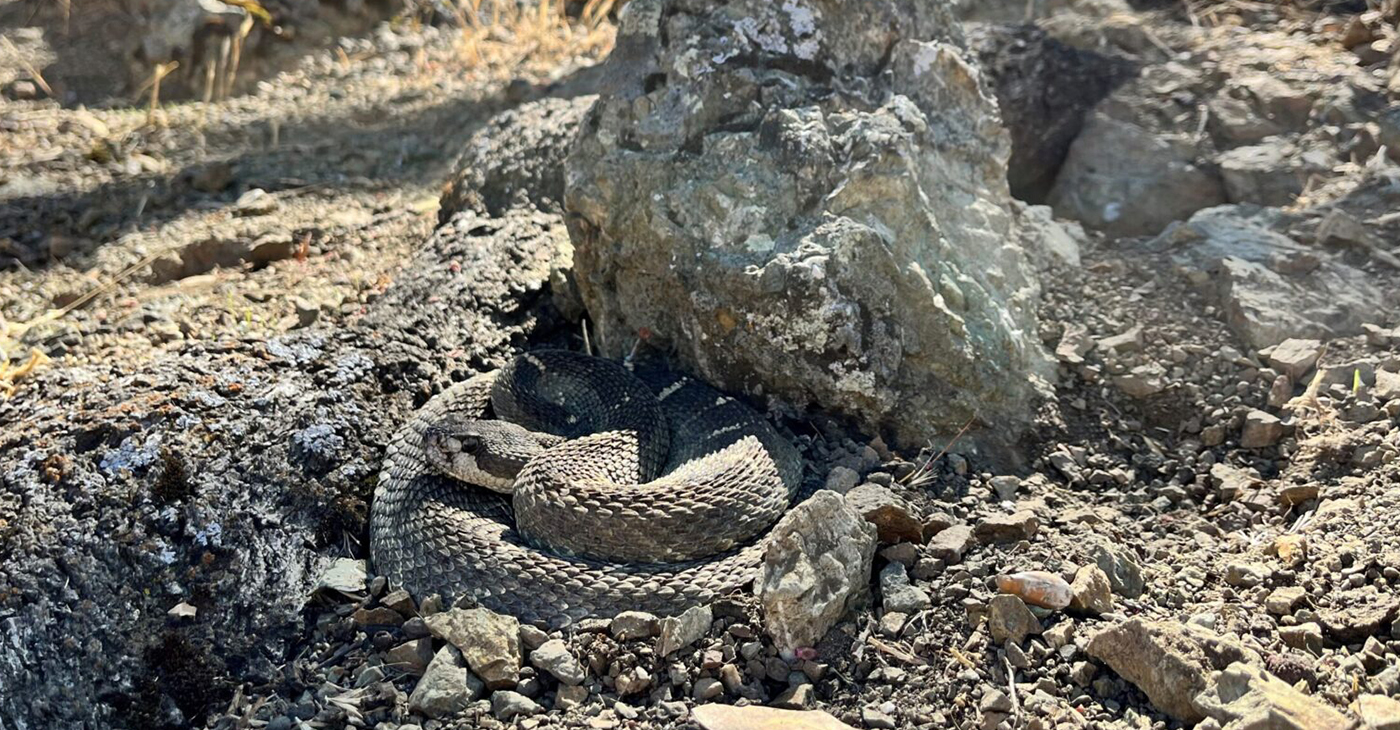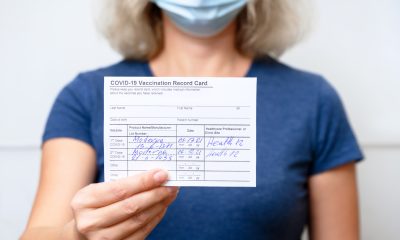Health
Amid Measles Outbreak, Few Rules on Teacher Vaccinations

This Thursday, Jan. 29, 2015, file photo, shows boxes of the measles, mumps and rubella virus vaccine (MMR) and measles, mumps, rubella and varicella vaccine inside a freezer at a doctor’s office in Northridge, Calif. While much of the attention in the ongoing measles outbreak has focused on student vaccination requirements and exemptions, less attention has been paid to another group in the nations classrooms: Teachers and staff members, who by and large are not required to be vaccinated. (AP Photo/Damian Dovarganes)
CHRISTINE ARMARIO, Associated Press
LOS ANGELES (AP) — While much of the attention in the ongoing measles outbreak has focused on student vaccination requirements and exemptions, less attention has been paid to another group in the nation’s classrooms: Teachers and staff members, who, by and large, are not required to be vaccinated.
In most states, there is no law dictating which vaccines teachers and school staff workers are required to get. Some states provide a list of recommended vaccines, but there is no requirement or follow-up for teachers to receive them.
So when a measles case surfaced at a California high school, it was easy for officials to review student records, but there were no immunization records on file for employees.
That meant all 24 teachers and staff exposed to the employee with measles had to prove their immunity — records that, for most, were decades old.
The issue has surfaced from time to time in state legislatures and is likely to be raised again in response to the latest outbreak, which originated at Disneyland in December and has spread to a half dozen states and Mexico. Most of those who fell ill were not vaccinated. As of Friday, public health officials said 114 people had contracted measles.
“I was definitely shocked,” Rep. Joanna Cole, a Democrat in the Vermont Legislature, said when she learned in 2012 that there were no teacher vaccination requirements in her state. There are still no requirements today. “I guess we all just assumed that they would have them.”
Cole and other legislators and parents across the U.S. believe the blanket presumption that teachers are up to date on their vaccines should be re-examined. They note that most of those sickened in the current outbreak are adults, and that schools are one of the top places for the spread of communicable disease.
“I will be surprised if we don’t see some changes in the next year to year and a half,” said Kristen Amundson, executive director of the National Association of School Boards of Education.
Already, some states are considering measles legislation. In Vermont, Democratic Rep. George Till says legislators will try this year to eliminate philosophical exemptions for students and require that teachers be up to date on the same vaccines students must receive.
“If we’re trying to limit the spread in school, why just students?” Till said. A similar bill he introduced in 2012 was defeated amid strong opposition from anti-vaccine groups, and he expects another battle.
In Colorado, pro-vaccination groups have been pushing the Department of Human Services to require vaccinations for workers at child care facilities, another area with uneven employee immunization standards. Measles cases have been confirmed at day care facilities in Chicago and Santa Monica, California.
Barbara Loe Fisher, director of the National Vaccine Information Center, a Virginia-based nonprofit that favors letting parents decide whether to vaccinate, said the discussion on vaccination requirements has started to expand from schoolchildren to certain adult professions. She said her organization has a number of concerns about requiring teacher vaccinations, including safety and job protection for those who cannot or choose not to be immunized.
“I think at the end of the day, the most important principle to protect is the right to make an informed voluntary decision, and that includes teachers,” she said.
At Vista Murrieta High School in California’s Riverside County, a middle class community between Los Angeles and San Diego, all teachers and staff who had been exposed to the measles were able to return to work within one to three days. Teachers who were born before 1957 were immediately excused, assuming they had either had gotten measles as a child or been exposed to the disease.
Kathy Ericson, president of the Murrieta Teachers Association, said the instructors were willing to do “whatever needs to be done” to protect students. But she stopped short of saying whether vaccination or proof of immunization should be required for employment.
“Most of us don’t have our shot records,” she said. “It would be a hard thing to go back and prove.”
Several parents with students in Murrieta Valley schools said they believed it was important for teachers to show proof of immunity or get vaccinated to protect their children and others too young or vulnerable to get the vaccines themselves.
“It is everyone’s responsibility to keep students healthy and safe,” said Sherrie Zettlemoyer, the mother of two elementary-school students. “I believe if you can be vaccinated you should.”
___
Follow Christine Armario on Twitter: http://www.twitter.com/cearmario.
Copyright 2015 The Associated Press. All rights reserved. This material may not be published, broadcast, rewritten or redistributed.
Community
Calif. Dept. of Public Health: Got Milk Allergies? Don’t Eat Dave’s Bakery Cornbread
The California Department of Public Health (CDPH) issued a warning on Jan. 26, instructing consumers with milk allergies or “severe sensitivity to milk” in the state to not eat Dave’s Bakery Corn Bread due to “risk of illness.” The CDPH warns that consumption of the corn bread manufactured by a Gardena-based company — with expiration dates up to June 18, 2024 — may lead to “life threatening” reactions.

By California Black Media
The California Department of Public Health (CDPH) issued a warning on Jan. 26, instructing consumers with milk allergies or “severe sensitivity to milk” in the state to not eat Dave’s Bakery Corn Bread due to “risk of illness.”
The CDPH warns that consumption of the corn bread manufactured by a Gardena-based company — with expiration dates up to June 18, 2024 — may lead to “life threatening” reactions.
“This warning applies only to the Corn Bread produced by Bake R Us, DBA Dave’s Baking Company and distributed to schools, retail facilities and in vending machines primarily in southern California,” the DCPH statement reads.
“This product should not be confused with other similarly named companies with national distribution,” it continues.
According to the CDPH, although the corn bread product contains whey, which is a milk allergen, there is no allergy warning label on the packaging, though it is required by state law.
So far, authorities say, no illnesses have been reported in the state, but if anyone finds the products on sale anywhere in the state, they should call the CDPH complaint hotline at (800) 495-3232 or file a report online at CDPH.ca.gov
The CDPH is also recommending that people who have eaten the product and are experiencing any reaction or ill effects should consult their health care provider.
Bay Area
East Bay Regional Park District Issues Rattlesnake Advisory
The East Bay Regional Park District released an advisory today on rattlesnakes, which emerge from winter hibernation in early spring and become more active. Warm weather can bring more potential for rattlesnake encounters with humans and dogs, particularly along trails and roads.

The Richmond Standard
The East Bay Regional Park District released an advisory today on rattlesnakes, which emerge from winter hibernation in early spring and become more active.
Warm weather can bring more potential for rattlesnake encounters with humans and dogs, particularly along trails and roads.
Visitors are encouraged to avoid hiking alone in case of an emergency, to scan the ground ahead as they walk, jog or ride, stay on trails avoiding tall grass, and to look carefully around and under logs and rocks before sitting down. Keep your dog on your leash to be extra safe, park officials said.
If you encounter a rattlesnake, leave it alone – it is unlawful to capture or harm one. Move carefully and slowly away or around it and give it plenty of space, park officials said.
Those who are bitten by a rattlesnake are instructed to stay calm by lying down with the affected limb lower than the heart, then having someone call 911.
Getting medical attention is critical.
Those bitten should not use tourniquets, “sucking,” or snake bite kits. If you are by yourself, walk calmly to the nearest source of help to dial 911, do not run.
If bitten by any other type of snake, wash the wound with soap and water or an antiseptic and seek medical attention.
Not sure what bit you? Check the bite for two puncture marks (in rare cases one) associated with intense, burning pain, which is typical of a rattlesnake bite. Other snakebites can leave marks without associated burning pain.
The Northern Pacific rattlesnake is the species found in East Bay Regional Parks. Snakes are important to the natural environment, helping to control rodents and other reptile populations. But enjoy them from afar.
For more information, download the Park District’s Common Snakes brochure or watch our Gopher Snake or Rattlesnake video to learn how to tell the difference between rattlesnakes and gopher snakes. Additional information is available at ebparks.org/safety/wildlife-encounters.
Alameda County
A Safe Place, Bay Area Domestic Violence Community Organization, Opens New Service Center in Oakland
Oakland-Bay Area non-profit, A Safe Place, announces the grand opening of its newly purchased building in Oakland that will be a service center for families that have suffered from domestic violence. The new, two-story building has over six new service rooms for counseling, mental health support groups, legal services, children’s treatment, safe space for community engagement, and partnership activities.

By Courtney Slocum Riley
Special to The Post
Oakland-Bay Area non-profit, A Safe Place, announces the grand opening of its newly purchased building in Oakland that will be a service center for families that have suffered from domestic violence.
The new, two-story building has over six new service rooms for counseling, mental health support groups, legal services, children’s treatment, safe space for community engagement, and partnership activities.
Domestic violence occurrences and offenses account for a considerable amount of all violent crimes in Alameda County. A Safe Place is attempting to provide a safe place for families to heal. A Safe Place is the only comprehensive domestic violence assistance program including a safehouse, in Oakland.
The grand opening celebration will also serve as a fundraiser to build out healing, therapeutic spaces for children and adult victims and survivors and survivors of domestic violence (male and female).
The new service center will expand the work of the organization, founded in 1976 when a group of women working in San Francisco came together to address the urgent need for a shelter in the East Bay. A year later, they founded A Safe Place (ASP) in Oakland. Run solely by volunteers, they set up a crisis line to offer crisis counseling and information to battered women and their children.
The organization serves over 500 adults and children annually through a host of services including crisis counseling via 24-hour crisis line, emergency motel and safehouse sheltering, mental health services (counseling and support groups).
Under the leadership of Executive Director, Carolyn Russell, the organization has grown from a single program into the comprehensive domestic violence and assistance program. ASP strives to meet the growing and diverse needs of our growing community.
The organization hopes to complete all the upgrades and therapeutic room improvements by August 2024. The public is invited to donate to the effort by using the website at www.asafeplace.org/donate. The organization also accepts in-kind gifts as well as items from the organization’s Amazon Wishlist.
-

 Community3 weeks ago
Community3 weeks agoFinancial Assistance Bill for Descendants of Enslaved Persons to Help Them Purchase, Own, or Maintain a Home
-

 Activism4 weeks ago
Activism4 weeks agoOakland Post: Week of April 3 – 6, 2024
-

 Business3 weeks ago
Business3 weeks agoV.P. Kamala Harris: Americans With Criminal Records Will Soon Be Eligible for SBA Loans
-

 Activism3 weeks ago
Activism3 weeks agoOakland Post: Week of April 10 – 16, 2024
-

 Community3 weeks ago
Community3 weeks agoAG Bonta Says Oakland School Leaders Should Comply with State Laws to Avoid ‘Disparate Harm’ When Closing or Merging Schools
-

 Community2 weeks ago
Community2 weeks agoOakland WNBA Player to be Inducted Into Hall of Fame
-

 Community2 weeks ago
Community2 weeks agoRichmond Nonprofit Helps Ex-Felons Get Back on Their Feet
-

 Community2 weeks ago
Community2 weeks agoRPAL to Rename Technology Center for Retired Police Captain Arthur Lee Johnson
























































